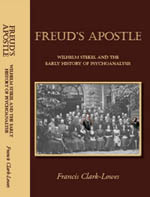While living in Paris I extended my walk at weekends in a great 430-mile loop via Chartres, Orleans, Bourges, Nevers, Vézelay, Troyes and Reims. The object of this long diversion was to link up with the starting point of the first part of the First Crusade. Peter the Hermit preached the crusade in the Berry, the capital of which is Bourges, and it was his route which, with some license, I planned to follow as far as Asia Minor. Near Nevers I visited Evelyne Coquet, and her sister Corinne, who had three years earlier ridden on horseback, accompanied by their Jack Russell Pluto, from Paris to Jersualem and had written a book about it (Le boneur à cheval, later translated into English as Riding to Jerusalem). They also followed the route of the First Crusade, though they took a more direct line to Austria. I was to benefit greatly from the many contacts they gave me along the way.
My brother, Julian, drove over from England in his vintage VW to deliver a new camera with which to record the remainder of my walk, and on 28th April, 1976, he took me to Reims and saw me off. I strode out north from the cathedral, while he headed south to make a living as a street artist in St Tropez.
How should I summarise all those pages of detailed notes, which I’ve just re-read for the first time since the 80s? Well, let’s start with a few statistics. The 870 miles to Vienna took me in all 59 days, though 20 of those were ‘rest days’ taken in Sedan, a village near Maastricht, Cologne (over a week), Heidelberg (nearly a week), Ulm and Linz. My average distance per walking day was therefore around 22 miles, but I often covered over 30. Of the 59 nights along the way, I paid for only 8. I was invited to stay in 40 private houses, an empty house, a garden shed, a monastery and a bathing hut. Three hotels either waived their charges or someone else paid them. I camped in the tent I carried with me 4 times, and the remaining 8 nights were in youth hostels. Would this be possible today?
But I find myself looking at this reliance on my fellow human beings, by no means all of them priests or mayors, with some ambivalence. On the one hand it is a great tribute to the generosity of the people who helped me out and whose company I so often enjoyed. Had I always paid for my overnight stays I would never have met half the interesting people I encountered. On the other hand I feel uncomfortable about the way I so often virtually begged for their help. But then wandering monks and minstrels had no such scruples. My logic was that I had very little money, and was afraid I’d use it all up before I had achieved my purpose.
The route I followed was largely along rivers, as it was for the Crusaders: the Meuse/Maas, the Rhine, the Neckar and the Danube. Sometimes there were tow-paths or flood defences which were easy to follow, at other times I’d have to walk away from the river to negotiate ox-bow lakes and tributaries. Once or twice I misread the map and ended up retracing my steps by several miles. I by-passed a big bend in the Rhine between Bingen and Worms and as the Neckar is particularly serpentine upstream from Heidelberg, I cut straight across country to Heilbronn. I relied on 1:200,000 maps which would normally be considered too small-scale for rambling, but had I taken, say, 1:50,000 maps I would have needed many more of them, and this would have added to my load.
On 25th June I finally descended through the Wienerwald to arrive at the Stefansdom in Vienna, a city which was destined to play a crucial part in my life, and where I was to stay this time for two and a half months. I discover from my notes that I spent the first couple of nights squeezed into my tent beside two lovely American girls. I’d quite forgotten that!

